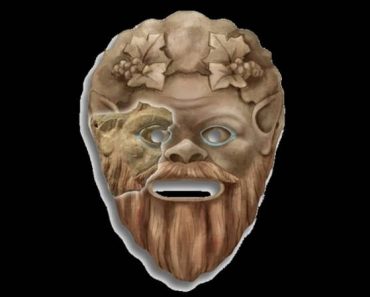A centuries-old shipwreck off the coast of Greece has unveiled one of history’s most extraordinary devices. The Antikythera Mechanism, recovered from the wreck first discovered in 1900, continues to astonish scientists with its sophisticated design. Recent excavations led by Professor Lorenz E. Baumer of the University of Geneva are shedding new light on ancient Greek engineering and commerce, proving that advanced technology existed far earlier than previously imagined.
Standing over the site virtually, I couldn’t help but imagine the sailors who once navigated the Mediterranean, unaware that their cargo included a device that would puzzle the world for millennia. It’s a reminder that human ingenuity often precedes our understanding of it.
The Antikythera Shipwreck as an engineering marvel
The Antikythera shipwreck lies between 150 and 230 feet underwater, a treasure trove of ancient artifacts. Baumer’s team focused not only on the recovered treasures but also on the ship’s structure, revealing insights into Greek maritime engineering.
The vessel, likely a cargo ship from the 1st century BCE, transported valuable goods from across the Mediterranean. Excavations uncovered 21 marble fragments, hundreds of ceramic shards, and amphorae linked to cities like Chios and Rhodes. These objects illuminate ancient trade networks and the materials and methods used in shipbuilding.
Of particular interest is the ship’s preserved hull section, constructed using a technique known as “shell-first building.” This method involved assembling the outer planking before installing internal frames, ensuring strength and seaworthiness for long voyages. Remarkably, researchers also identified a second vessel about 650 feet from the original wreck, highlighting the complexity of the site and the density of ancient maritime activity.
The Antikythera Mechanism as a technological leap
Among the ship’s most iconic finds is the Antikythera Mechanism itself, a device that has captivated scholars for over a century. This intricate network of interlocking gears functioned as an astronomical calculator, capable of predicting the positions of the Sun, Moon, and visible planets.
Tony Freeth, a lead researcher from University College London, describes the mechanism as “a creation of genius.” Its bronze rings and gears were crafted with exceptional precision to model celestial movements. The device tracked lunar phases, predicted eclipses, and even forecasted planetary alignments, demonstrating a deep understanding of astronomy centuries ahead of its time.
Modern imaging techniques have revealed hidden inscriptions on the mechanism, providing guides for users to interpret the complex planetary cycles. Its design leveraged gear ratios and cyclical calculations, allowing it to chart Venus’ 289 cycles over 462 years—an astonishing feat of ancient engineering. The combination of accuracy and mechanical feasibility makes the Antikythera Mechanism both a scientific tool and an engineering marvel.
Decoding ancient Greek astronomy
How bay leaves in your kitchen keep cockroaches and ants away : “I haven’t seen a bug since I tried”
The Antikythera Mechanism reflects the advanced astronomical knowledge of ancient Greece, building upon centuries of Babylonian and Greek traditions. Its concentric rings and engraved scales enabled users to read multiple planetary cycles simultaneously. Lunar nodes marking eclipse paths and the alignment of the Sun and Moon to track phases indicate a profound understanding of celestial mechanics, far beyond what was thought achievable at the time.
Freeth emphasizes that deciphering this 3D puzzle reveals a blend of mathematical precision, scientific insight, and mechanical skill. The careful selection of cycles and the integration of Babylonian astronomy with Greek planetary theories created a compact model of the universe. Not only did it automate celestial predictions, but it also offered a conceptual framework for understanding the cosmos, laying the groundwork for future scientific inquiry.
Implications for ancient science and modern understanding
The Antikythera Mechanism demonstrates that ancient Greek civilization was capable of extraordinary technological achievements. It suggests that other advanced devices may have existed, now lost to history. The findings from the shipwreck also enhance our understanding of ancient trade, indicating the transport of both valuable commodities and intellectual artifacts across the Mediterranean.
For me, the discovery is a lesson in the longevity of human ingenuity. Even as centuries pass, the achievements of ancient civilizations can still inspire awe and challenge our assumptions about technological progress. The mechanism bridges millennia, connecting us with the curiosity and intellect of ancient engineers and astronomers.
As studies continue, researchers hope to refine our understanding of the mechanism’s full capabilities, the construction techniques of the ship, and the broader context of Greek maritime commerce. Each new insight reminds us how much there still is to learn from the past.
The Antikythera shipwreck is more than a collection of ancient objects—it is a testament to human curiosity, precision, and the desire to understand the world. Have you ever wondered what other technological marvels the ancient world might be hiding ? Share your thoughts and join the conversation about this extraordinary discovery.







